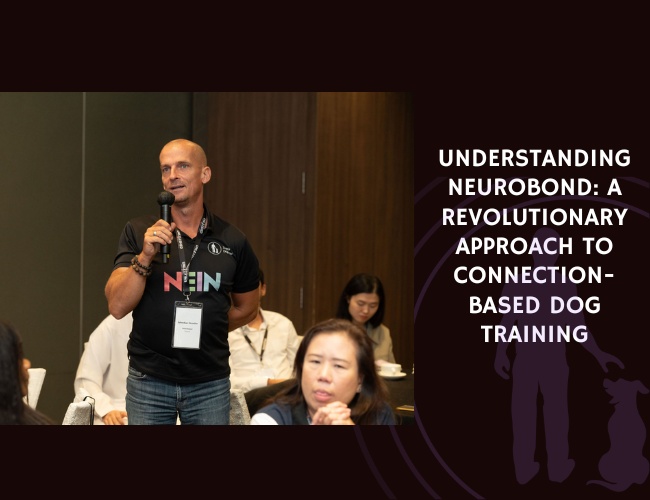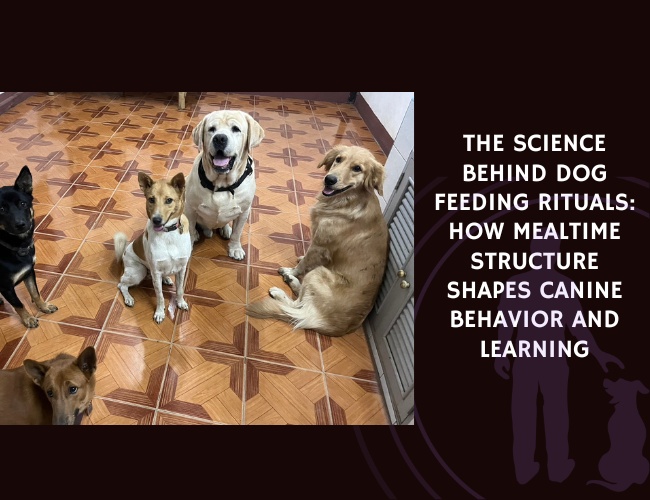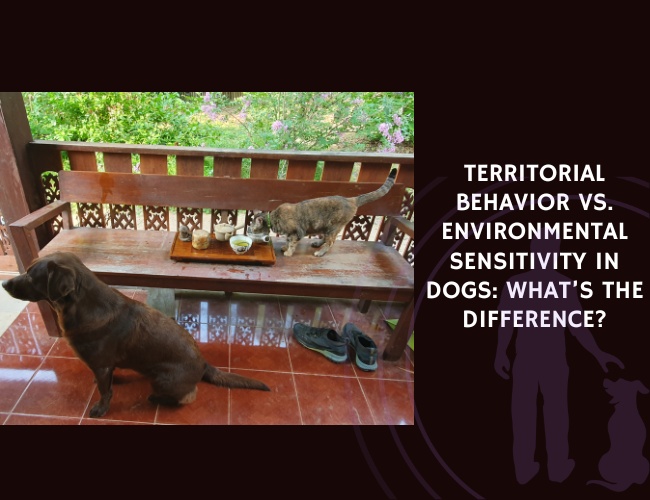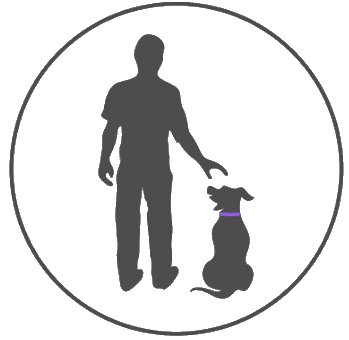Introduction to Dog-Human Communication
Historical Context of Dog Domestication and Its Impact on Communication
The domestication of dogs, believed to have begun over 15,000 years ago, has profoundly impacted the nature of communication between dogs and humans. Canis lupus familiaris, the domestic dog, is descended from wild wolves that initiated a symbiotic relationship with humans during the hunter-gatherer era. This early form of domestication likely arose from wolves scavenging near human encampments, leading to a mutualistic relationship where both parties benefited: humans gained protection and hunting aides, while wolves received food and shelter.
As humans and wolves began to coexist, certain wolves exhibited traits that made them more suitable companions. These traits, such as reduced aggression and increased sociability, laid the groundwork for more sophisticated forms of interaction. Over millennia, humans selectively bred these proto-dogs for traits that fostered better communication, cooperation, and bonding.
The shift from wild wolves to domesticated dogs transformed the communication dynamics within the human-dog relationship. Dogs developed an enhanced ability to understand and respond to human cues, leading to an intricate system of interspecies communication. Understanding this historical context helps us appreciate the evolutionary pressures that shaped the communicative abilities of dogs.
Evolutionary Significance of Human-Dog Relationships
The symbiotic relationship between dogs and humans has been evolutionary significant for both species. Dogs not only adapted to live alongside humans, but their integration into human society also influenced human evolution. This interdependence created unique evolutionary paths, shaping physical and behavioral traits conducive to a cooperative partnership.
From an evolutionary standpoint, dogs became attuned to human body language, facial expressions, and vocal tones. Conversely, humans developed an understanding of canine behavior and signals. This bi-directional adaptation was crucial in reinforcing social bonds and enhancing survival.
Human-dog relationships fostered the evolution of new communication strategies, allowing dogs to perform roles such as hunting, herding, guarding, and companionship more effectively. The deep social bonds formed between humans and dogs provided emotional support and companionship, which likely played a role in the psychological and social development of humans.
Importance of Understanding Interspecies Communication
Understanding the dynamics of dog-human communication is crucial for several reasons. Firstly, it helps in recognizing the specific needs and behaviors of dogs, leading to better caretaking and enriched quality of life for our canine companions. Effective communication can promote stronger bonds and reduce the likelihood of behavioral issues, as both dogs and their human counterparts can better interpret and respond to each other’s signals.
Secondly, knowledge of interspecies communication is essential in dog training. Traditional training methods often overlooked the natural communication styles of dogs, leading to misunderstandings and frustration for both parties. Modern training approaches emphasize respect for natural dog behaviors and signals, fostering a more humane and effective training process.
Finally, studying dog-human communication provides insights into the broader field of animal cognition and interspecies interactions. Understanding how dogs perceive and interpret human cues can contribute to research in animal behavior, welfare, and even human psychology, given the intricate similarities in social cognition.
By delving into the historical and evolutionary aspects of dog-human communication, we can lay the groundwork for a more profound appreciation and understanding of our interspecies relationships. This foundational knowledge sets the stage for exploring the natural communication patterns in dogs, which is critical for developing effective training approaches and enhancing our mutual understanding.
The Evolutionary Basis of Communication
Evolutionary Adaptations for Communication
The evolution of dog-human communication is a fascinating journey that highlights the unique adaptations dogs have developed to interact with humans. Over thousands of years, dogs have evolved specific traits that enhance their ability to communicate effectively with us. This evolutionary process has been driven by the mutual benefits derived from the human-dog relationship, where both species have adapted to understand and respond to each other’s cues.
One of the most significant evolutionary adaptations in dogs is their heightened sensitivity to human social signals. Unlike their wild ancestors, domestic dogs have developed an acute ability to interpret human gestures, facial expressions, and vocal tones. This sensitivity allows them to respond appropriately to human commands and emotions, facilitating a deeper bond between the two species. Studies have shown that dogs can distinguish between different human emotions, such as happiness and anger, by observing facial cues and body language, which underscores their evolved capacity for empathy and understanding.
Body language plays an equally crucial role in how dogs communicate with humans. A wagging tail often signifies happiness or eagerness, while a lowered tail might indicate submission or anxiety. Similarly, the position of a dog’s ears and eyes can provide insights into their emotional state. For example, flattened ears may suggest fear or aggression, whereas perked-up ears typically denote curiosity or alertness. By observing these subtle cues, humans can better understand their canine companions and respond appropriately to their needs.
Furthermore, the domestication process has led to physical changes in dogs that support communication. For instance, the development of expressive facial muscles enables dogs to convey emotions more clearly, making it easier for humans to interpret their needs and feelings. This co-evolutionary journey has not only enhanced the communicative abilities of dogs but also enriched the human experience, as we continue to learn and adapt to our canine companions’ unique ways of interacting with us.
Co-evolution of Dogs and Humans through Domestication
The relationship between dogs and humans is one of the earliest known examples of domestication, beginning more than 15,000 years ago. Originally, wolves who scavenged near human encampments found advantage in cohabiting with humans. Over generations, these wolves evolved, developing traits that fostered trust and compliance, eventually becoming the domestic dogs we know today.
Humans, in turn, recognized the benefits of dogs’ abilities in hunting, guarding, and companionship. As a result, humans selectively bred dogs that exhibited favorable traits such as tameness, communication ease, and social compatibility. This mutual selection process facilitated deeper integration of both species into each other’s social structures, promoting more advanced forms of communication.
Role of Self-domestication in Language Development
Self-domestication plays a vital role in the development of communication methods between species. Unlike forced domestication, self-domestication occurs naturally, without deliberate human intervention, through selection for traits that promote non-threatening interactions and coexistence. In dogs, self-domesticated traits included reduced aggression, higher sociability, and heightened sensitivity to human social cues.
These traits significantly impacted language development, as dogs evolved to better interpret human gestures, facial expressions, and vocal tones. Humans adapted by developing more nuanced verbal and non-verbal communication strategies to interact effectively with dogs. This reciprocal refinement of communication abilities hints at the deep interconnection forged through years of cohabitation and mutual adaptation.
Adaptive Communication Strategies between Species
Effective communication between dogs and humans relies heavily on adaptive strategies that have evolved to bridge interspecies differences. Dogs use a combination of auditory signals, body language, and facial expressions to communicate with humans. For instance, a dog’s wagging tail can indicate excitement, while flattened ears can show fear or submission.
Humans have learned to recognize and react to these signals appropriately, trusting them in various contexts, whether for training, bonding, or ensuring the safety and well-being of both species. Similarly, dogs have adapted to understand human cues, such as pointing or vocal commands, and even interpret emotional states, such as recognizing a human’s joyful expression versus a frown of disapproval.
The results of these adaptive strategies can be observed in the vast repertoire of shared behaviors and mutual understanding that exist between dogs and humans today. These evolved communication strategies underline the significance of this unique interspecies bond and highlight the ongoing importance of recognizing and nurturing these adaptative capabilities.
As we delve deeper into the natural communication patterns of dogs, it becomes apparent that the foundation laid by evolutionary adaptation has had enduring impacts on how dogs and humans interact and understand one another. This understanding not only enhances our day-to-day interactions with dogs but also informs modern approaches to dog training and the future research directions that will continue to shape this dynamic relationship.
Natural Communication Patterns in Dogs
Understanding Innate Canine Communication Methods
Dogs possess a repertoire of innate communication methods that they use to interact with their environment and other beings. These methods are deeply ingrained in their behavior and have evolved over thousands of years. By understanding these natural communication patterns, humans can better interpret and respond to their dogs’ needs and behaviors, fostering a stronger bond and more effective interaction.
One of the primary ways dogs communicate is through body language. This includes tail wagging, ear positioning, and body posture. For instance, a wagging tail can signify excitement or happiness, while a tucked tail may indicate fear or submission. Similarly, the position of a dog’s ears can reflect their emotional state: upright ears often suggest attentiveness or alertness, whereas flattened ears can signal anxiety or aggression.
Vocalizations are another crucial aspect of canine communication. Dogs use a variety of sounds, such as barking, growling, whining, and howling, to express different emotions and intentions. Each vocalization serves a specific purpose; for example, barking can alert humans to potential dangers or signal a desire for attention, while growling typically serves as a warning.
Scent marking is also a vital communication tool for dogs. By leaving their scent through urine, feces, or glandular secretions, dogs can convey territorial boundaries, reproductive status, and individual identity to other dogs. This olfactory messaging system is an essential part of their social interactions and helps maintain harmony within their environment.
Evolution of Dog-Specific Social Signals
Dog-specific social signals have evolved as a result of their domestication and prolonged interaction with humans. This evolution has led to the development of unique behaviors and traits that facilitate communication between dogs and humans.
One key aspect of this evolution is the ability of dogs to interpret human facial expressions and gestures. Research has shown that dogs can distinguish between different human emotions, such as happiness, anger, and sadness, by observing facial cues and body language. This ability to read human emotions is a result of the close bond that has formed between the two species over time.
Additionally, dogs have developed specific vocalizations to communicate with humans more effectively. For example, the “iconic” puppy-dog eyes—a begging or pleading expression—have been selectively bred to elicit nurturing responses from humans. This adaptation highlights the co-evolution of dogs and humans and the ways in which dogs have adapted their communication strategies to better suit their human companions.
Role of Early Socialization in Communication Development
Early socialization plays a critical role in the development of a dog’s communication abilities. The experiences and interactions that a puppy has during its formative weeks significantly impact its ability to communicate and socialize with both humans and other dogs.
During the early stages of life, puppies learn essential social skills from their mother and littermates. These interactions teach them how to play, read body language, and respond to various social cues. Positive experiences with humans during this period are equally important, as they help puppies become well-adjusted and confident adult dogs.
Exposure to diverse environments, people, and other animals during the socialization period allows puppies to develop a broad range of communication skills. This exposure helps them adapt to different situations and reduces the likelihood of behavioral issues stemming from fear or anxiety. Consistent and positive reinforcement during this time fosters a strong foundation for effective communication throughout the dog’s life.
As we continue to explore the intricate dynamics of the human-dog relationship, it is essential to consider the ways in which both species have adapted their communication methods to better understand and interact with each other. This understanding not only strengthens the bond between humans and dogs but also enhances our ability to care for and train our canine companions effectively.
The Science of Human-Dog Interaction
Research Findings on Reciprocal Communication Patterns
An integral part of understanding the science behind human-dog interaction is exploring the reciprocal communication patterns that have evolved. Research indicates that both species have developed specific behaviors to understand and respond to one another effectively. For instance, dogs can interpret human gestures, such as pointing, and use eye contact to gauge human intentions. Conversely, humans can often discern a dog’s needs or emotional state through its body language, vocalizations, and facial expressions.
Studies have shown that dogs can differentiate between different human emotions, such as happiness, anger, and sadness, by observing facial cues and body language. This ability enhances mutual understanding and enables more profound interaction between humans and dogs. Furthermore, research demonstrates that tone of voice significantly impacts a dog’s response; dogs tend to obey commands more readily when spoken to in a calm and encouraging tone compared to a loud or harsh one.
Impact of Domestication on Both Species’ Communication Abilities
The domestication of dogs has had a profound impact on the communication abilities of both species. As dogs adapted to living alongside humans, they evolved to become more attuned to human social cues and communication methods. This process, known as domestication, has facilitated a mutual understanding that is unique among domesticated animals.
Domesticated dogs exhibit a higher propensity for social cooperation and interaction with humans than their wild counterparts, such as wolves. This is evident in their ability to follow human gestures, respond to verbal commands, and engage in cooperative tasks. Domestication has also shaped physical traits in dogs, such as wider eyes, that make them more appealing and easier to read for human caretakers.
On the human side, living with dogs has influenced communication patterns as well. Humans have developed specific vocal tones and body language intended to communicate effectively with dogs. This mutual adaptation can be seen in the development of “dog talk,” a form of speech characterized by a higher pitch and exaggerated intonation, which humans often use when interacting with dogs.
Social Learning and Adaptation in Interspecies Communication
Social learning plays a significant role in the communication dynamics between dogs and humans. Dogs are highly capable of observing and mimicking behaviors, which enables them to learn from human actions and responses. This form of learning is crucial for effective communication and has been a cornerstone in their ability to adapt to human environments.
Through social learning, dogs can understand commands, solve problems, and even pick up on routines established by their human companions. For example, a dog that sees its owner putting on shoes may learn to associate this with going for a walk. Moreover, social learning is a two-way street. Humans often learn to interpret canine signals more accurately by observing dogs’ reactions to various stimuli and behaviors.
The adaptability of dogs in human settings is a testament to their incredible social intelligence. This ability to adapt has been reinforced through consistent interaction and positive reinforcement, ensuring that communication remains effective and beneficial for both parties.
The intricate dance of communication between humans and dogs is a continuing field of scientific study, revealing insights into the depth and complexity of this unique interspecies relationship. Understanding these aspects can significantly enhance the bond between dogs and their human families, providing a foundation for improved training methodologies and enriched daily interactions.
Modern Approaches to Dog Training
Integration of Evolutionary Understanding in Training Methods
The journey of dog domestication spans thousands of years, resulting in a deep-seated bond and a unique form of communication between dogs and humans. This evolutionary backdrop is pivotal in shaping modern dog training methods. By understanding the co-evolution of dogs and humans, trainers and owners can develop strategies that respect and harness the natural communication abilities of dogs.
Scientific research underscores the importance of evolutionary insights in developing effective training techniques. For instance, understanding the natural predatory behavior of dogs and their hierarchical social structures can guide the implementation of reward-based training. Trainers can utilize positive reinforcement, such as treats, praise, and play, which align with a dog’s instinctual motivations and promote desired behaviors.
Moreover, recognizing the genetic predispositions of different breeds is crucial. Breeds have been selectively bred for specific purposes—herding, guarding, hunting, and companionship. These innate tendencies influence how dogs respond to training. Tailoring training methods to fit the breed’s characteristics ensures a more effective and humane approach.
Importance of Respecting Natural Communication Styles
Training methods must respect and incorporate the inherent communication styles of dogs. Canines primarily communicate through body language, facial expressions, vocalizations, and scent marking. Over time, domesticated dogs have become adept at interpreting human gestures and vocal tones, while humans have learned to understand canine signals.
Effective training hinges on this mutual understanding. For example, maintaining eye contact and using consistent hand signals can enhance command comprehension in dogs. Additionally, using a calm and assertive tone can help reinforce obedience and build trust. Conversely, ignoring or misinterpreting a dog’s communication can lead to stress and behavioral issues.
Respecting a dog’s need for social interaction is equally important. Dogs are inherently social animals, and their behavior often reflects their social needs. Training environments that encourage positive social interactions with other dogs and humans can foster better communication skills and reduce anxiety.
Role of Early Socialization in Training Success
Early socialization plays a critical role in a dog’s development and training success. The period between three and fourteen weeks of age is considered a critical window for socialization. During this time, puppies are highly receptive to new experiences, environments, and social interactions. Proper socialization during this stage can significantly shape a dog’s temperament and behavior for life.
Exposing puppies to various stimuli—different sounds, sights, people, and other animals—can help them become well-adjusted and confident adults. Structured socialization classes can provide controlled environments for puppies to learn appropriate behaviors and communication skills.
Moreover, early socialization helps in preventing common behavioral problems, such as aggression and fearfulness. Puppies that are well-socialized are generally more adaptable, resilient, and easier to train. They learn to communicate effectively with both humans and other dogs, which is essential for their overall well-being.
Transitioning to the next topic, the continuous advancement in dog-human communication research holds promising potential for developing even more refined training methodologies. This evolving field seeks to deepen our understanding of interspecies communication and enhance the quality of training and interaction between dogs and humans.
Future Directions and Research
Emerging Areas in Dog-Human Communication Research
As we move forward, the landscape of dog-human communication research continues to expand, offering exciting new avenues for exploration. One of the emerging areas focuses on the cognitive abilities of dogs, examining how they process information and understand human cues. Advanced neuroimaging techniques are being utilized to study the brain activity of dogs in response to human speech and gestures, shedding light on the neural mechanisms underlying interspecies communication.
Another promising area is the use of artificial intelligence and machine learning to analyze and interpret dog behaviors. By collecting vast amounts of data from various dog-human interactions, researchers aim to develop sophisticated algorithms that can predict and enhance communication between the two species. This approach not only has the potential to improve training methodologies but also to create better tools for understanding and responding to canine needs.
Virtual reality (VR) and augmented reality (AR) technologies are also being explored as innovative ways to study and enhance dog-human interactions. These technologies allow researchers to simulate various environments and scenarios, providing valuable insights into how dogs respond to different stimuli and how their behavior can be modified in real-time.
Potential Improvements in Training Methodologies
With the growing body of research, there is significant potential to refine and improve current training methodologies. Integrating insights from evolutionary and cognitive science can lead to more humane and effective training techniques that respect the natural communication styles of dogs. By understanding the inherent social signals and learning patterns of dogs, trainers can develop methods that are more aligned with the canine perspective.

Positive reinforcement, already a cornerstone of modern training, can be further optimized by tailoring it to individual dogs’ preferences and cognitive abilities. Personalized training plans that consider a dog’s breed, age, and temperament can lead to more successful outcomes. Additionally, incorporating socialization practices from an early age ensures that dogs are well-adjusted and capable of navigating various human environments.
Another area of improvement is the use of technology in training. Wearable devices that monitor a dog’s physiological responses can provide real-time feedback to trainers, helping them understand how their techniques are affecting the dog. Apps that track progress and suggest adjustments can also support both professional and at-home trainers.
Long-Term Effects of Different Communication Approaches
Understanding the long-term effects of various communication approaches is crucial for fostering lasting and healthy dog-human relationships. Research indicates that positive reinforcement-based training not only enhances learning outcomes but also strengthens the bond between dogs and humans. Dogs trained with humane methods are generally more confident, less anxious, and better at interpreting human cues.
Conversely, aversive training methods, which rely on punishment and negative reinforcement, have been shown to increase stress and behavioral issues in dogs. These methods can undermine the trust between dogs and their owners, leading to a breakdown in communication and increased aggression or fear-based behaviors.
Longitudinal studies are essential to assess the enduring impact of different training approaches on dog behavior and welfare. By tracking dogs over extended periods, researchers can identify which methods lead to the best outcomes in terms of obedience, adaptability, and emotional well-being.
In conclusion, the future of dog-human communication research holds immense promise for deepening our understanding and improving our interactions with our canine companions. Advances in cognitive science, technology, and humane training methodologies are set to transform the way we communicate with dogs, ultimately enhancing the quality of life for both species.









